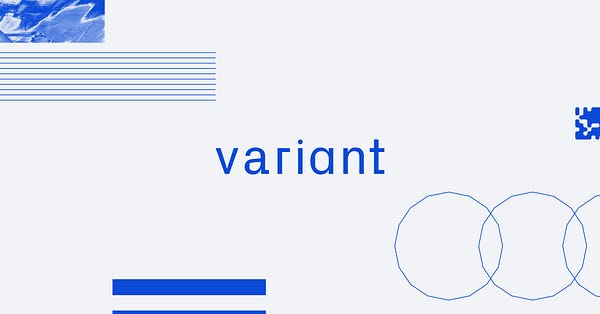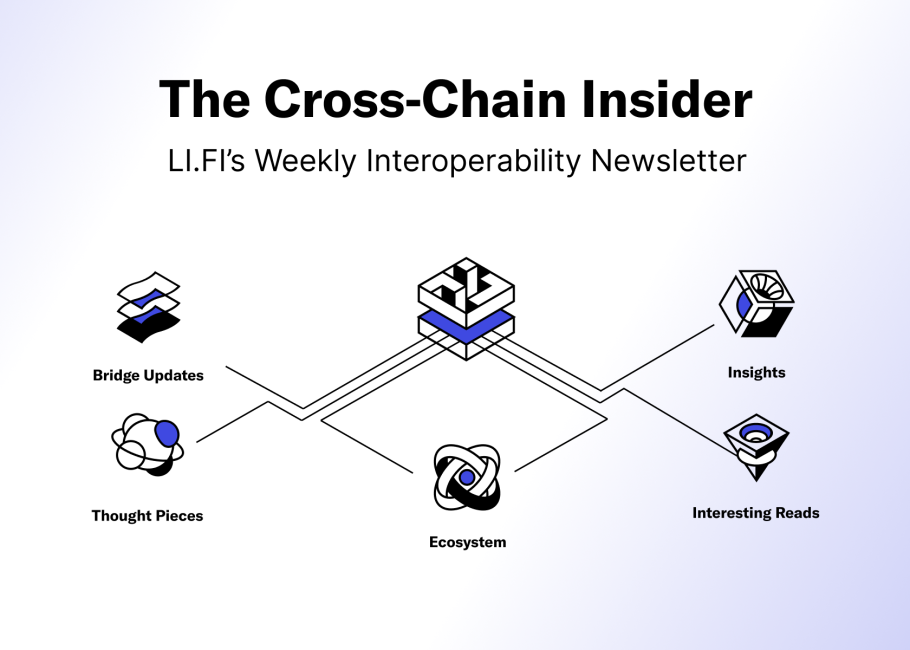Avalanche x Amazon Web Services | Polygon Hardfork on 17th Jan | Planetsomewhere and Tomb Swap Integrate LI.FI & More!
Last Week In The Multi-Chain Ecosystem (9-15 Jan '23)
Welcome to LI.FI’s Cross Chain Insider newsletter. If you want to join this community of cross-chain aficionados learning about bridges, interoperability, and the multi-chain ecosystem, subscribe below:
You can also check out LI.FI’s research articles, and follow us on Twitter!
Bridge Updates
1) LongHashX & Axelar Launch Cross-Chain Accelerator Program 🤝🏻
LongHash Ventures and Axelar announced the launch of LongHashX Accelerator Cohort 10, the first global cross-chain accelerator program. The cohort will be focused on projects building cross-chain use cases leveraging Axelar’s infrastructure.
2) Planetsomewhere Integrates LI.FI’s Widget 🦎
Planetsomewhere, a planetary metaverse simulator powered by blockchain technology, has integrated LI.FI’s widget inside their dApp. Users can now bridge and swap their assets across 16 EVM-compatible chains, 13 bridges, and 28 DEXs directly in the dApp.
3) Pangolin Now Supports Cross-Chain to Fantom 👏
Pangolin, an Avalanche native DEX, has added support for native $FTM and $AVAX between Fantom and Avalanche via the BridgeSwap feature (powered by LI.FI).
4) Multichain Releases zkRouter Whitepaper 💪🏻
Multichain announced its new development, zkRouter, with the release of its whitepaper. According to Multichain, leveraging zero-knowledge proofs (ZKPs) will allow ‘trustless, secure and private transfer of assets and information between different blockchains without revealing sensitive information’ via their Router.
5) Tomb Swap is now Fully Integrated with LI.FI 🔥
The Game of Tomb announced its partnership with LI.FI, which works as follows:
Tomb Swap has been integrated into LI.FI to enable users to find the best swap routes (check it out on transferto.xyz)
Tomb Swap will integrate LI.FI to boost the number of tokens supported and enable cross-chain swaps (check it out here)
Multi-Chain Ecosystem Updates
1) Avalanche Partners with AWS 🤝🏻
Ava Labs and Amazon Web Services (AWS) have partnered to ‘accelerate enterprise, institutional, and government adoption of blockchain’. The partnership includes:
AWS supports Avalanche’s infrastructure and dApp ecosystem through the AWS Marketplace.
Ava Labs is becoming a member of the AWS Partner Network (APN).
2) Polygon Hardfork Scheduled for 17th Jan 💜
Polygon is ready to go ahead with the proposed hard-fork upgrade of the network on Jan 17th. The upgrade aims to:
reduce the severity of gas spikes; and
address chain reorganizations (reorgs) to reduce time to finality.
Polygon will launch a hard-fork upgrade on Jan 17th to boost performance by addressing the issues of gas spikes and chain reorganizations (reorgs).
3) Flare L1 is Now Live 👏
Flare, an L1 oracle network, has launched its mainnet and the first token distribution of the FLR token. Currently, the network hosts two core protocols — State Connector and FTSO, allowing devs to use data from different chains and build interoperable dApps.
4) Consensys Announces zkEVM Private Beta 🧐
The EVM-equivalent ConsenSys zkEVM private beta testnet is now open on Infura for selected applicants. Testnet participants will be able to bridge assets between the Goerli testnet and the zkEVM to test their smart contracts and dapps.
5) Optimism Goerli Succesfully Upgraded to Bedrock 🔥
OP Labs announced that they have successfully completed the upgrade of Optimism’s Goerli Testnet to Bedrock.
What’s Popping on Twitter?
Last week, 0xJim, a self-proclaimed cross-chain enjoyoooor summarized his thoughts on bridges through an excellent long-form article.

Each bridge design has its own strengths but, more importantly, short-comings in trust-minimization that need to be talked more about. This is why 0xJim’s article is so good because it offers an easy way to understand all the different trade-offs and complexities.
The article was full of insights on how bridges work but there was one framework that classifies bridges into Team Human, Economics, Game Theory, Security, and Math, that we feel needs to be talked about more. Let’s dive deeper into it.
As per Jim, we can classify bridges based on who’s verify the transaction across bridge implementation into the following buckets:
Team Human — these bridges use a multi-signature implementation that requires entities to run full nodes and verify transactions by attesting to the validity of a transaction. If a transaction receives threshold signatures, it is considered verified. Such implementations make the trust assumption that entities care about their reputation and thus won’t be dishonest. Examples: Multichain, Wormhole.
Team Economics — these bridges also use a multi-signature implementation but add a layer of Proof of Stake. The implementation is similar to ‘Team Human’ but in addition to trusting the entities, there’s an economic incentive for them to not lie as their collateral will be slashed if they do so. Example: Celer’s cBridge, Axelar, deBridge.
Team Game Theory — these bridges break up the bridging process into two separate jobs done by two separate job doers and ensures security by dis-incentivizing coordination between the two. Examples: LayerZero or Optimistic bridges like Nomad, Beamer.
Team Security — these bridges leverage a secure enclave (TEE) like Intel SGX to perform encrypted off-chain light client verification. Thus, the trust assumption relies on the proper functioning and security of the TEE enclave. Examples: Datachain, LCP network.
Team Math — these bridges perform on-chain light client verification by leveraging zk tech and succinct proofs. However, since Zero Knowledge SNARK research is still in its early stages, zk light clients are a nascent technology and are limited in scope. Examples: Succinct’s Ethereum-to-Gnosis bridge, Electron Labs’ Cosmos-to-Ethereum bridge, and Polymer’s light clients to bring IBC to all blockchains.
To conclude:

And that’s that! If you’re interested in learning more about Jim’s framework and his thoughts on bridges, make sure to follow us on Twitter and join us on a Learn with LI.FI session with Jim in the coming days.
Interesting Reads
1) Cross-Chain Order Flow Auctions


2) Trustless Bridges


3) Wormhole Deep Dive


Here are some Spaces you can check out!
Get Started with LI.FI Today
To learn more about us,
Head to our link portal at Link3.to/lifi
Read our SDK ‘quick start’ at docs.li.fi
Join the official Discord server
Follow our Telegram Newsletter
or try our any-2-any swaps NOW at transferto.xyz




Nice
Nice Красивый